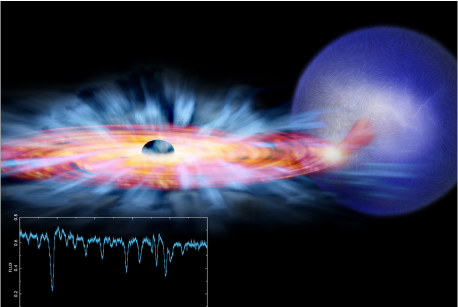Thesis Topic: Mapping accretion disc atmospheres and outflows in X-ray binaries at high spectral resolution with XRISM
Thesis Supervisor: María Díaz Trigo
Abstract
Accretion onto neutron stars and black holes powers the most luminous phenomena in the Universe. Associated with accretion onto such compact objects is the existence of outflows, in the form of uncollimated winds or highly collimated relativistic jets. The proposed project aims to deepen our understanding of outflows and related accretion flow in X-ray binaries, systems composed by a neutron star or a stellar-mass black hole, fed by a relatively normal star.
The project will consist of a systematic study of the characteristics of the accretion disc atmospheres and winds in X-ray binaries. Winds are ubiquitous to all X-ray binaries and carry away a significant mass, which could be even larger than the mass that is being accreted by the black hole or neutron star, thus fundamentally affecting the state of the system and the environment. Modelling of the winds with existent plasma codes such as CLOUDY, XSTAR or SPEX will allow comparison of wind parameters with accretion states of the black hole or neutron star and will ultimately lead to an estimation of the feedback of such winds to the environment and on its influence for triggering accretion state changes. In X-rays, science verification data with unprecedented spectral resolution from the recently launched observatory XRISM will be used. In optical wavelengths, the archival data from VLT/X-shooter will be explored and new observations will be proposed both to XRISM and to the VLT.

Illustration: NASA/CXC/M. Weiss; X-ray spectrum: NASA/CXC/U.Michigan/J. Miller et al.

